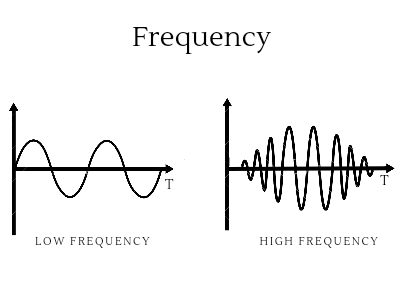Frequency FormulaWaves are all around us, from the gentle ripples of a pond to the powerful vibrations of sound and light. The study of waves is essential in various scientific fields such as physics, engineering, and telecommunications. A fundamental concept in wave analysis is frequency, a key parameter that determines wave behavior and properties. In this article, we look at the formula for frequency and consider its importance in the world of waves. What is FrequencyFrequency is defined as the number of wave cycles or oscillations per unit of time, often denoted by the symbol 'f'. It measures the number of times a wave repeats its pattern and is usually expressed in units of hertz (Hz), which equals cycles per second. The higher the wave frequency, the more cycles it passes through in a given period of time. 
Frequency FormulaThe frequency formula provides a mathematical relationship between the frequency of a wave, the velocity of the wave, and the wavelength. The wavelength (symbolized by the Greek letter λ, lambda) is the spatial distance between two consecutive points in a wave that is in phase, meaning they have the same position within their respective cycles. The frequency formula can be expressed as: 
In this formula, 'f' represents the frequency, 'v' denotes the velocity of the wave, and 'λ' signifies the wavelength. Components of Frequency FormulaLet's take a closer look at each of these components and understand how they contribute to the overall behavior of waves.
Example Using Frequency FormulaQuestion: Suppose a sound wave travels through air with a velocity of 343 meters per second (m/s). If the wavelength of the wave is 1 meter (m), we can use the frequency formula to calculate the frequency of the wave: Solution: f = v / λ f = 343 m/s / 1 m f = 343 Hz Therefore, the sound wave frequency in this example is 343 Hz. Uses of Frequency FormulaThe frequency formula is a powerful tool for analyzing waves across various disciplines. It allows scientists and engineers to understand and manipulate the properties of waves, enabling advancements in fields like telecommunications, acoustics, and optics.
ConclusionThe frequency formula, expressed as f = v / λ, plays a vital role in our understanding of waves. By relating frequency, velocity, and wavelength, it allows us to quantify and manipulate various wave phenomena. The formula finds widespread applications in fields such as telecommunications, acoustics, optics, and beyond, enabling advancements in technology and scientific research. By mastering the frequency formula, we unlock the secrets of waves and open doors to new possibilities in multiple domains. |
 For Videos Join Our Youtube Channel: Join Now
For Videos Join Our Youtube Channel: Join Now
Feedback
- Send your Feedback to [email protected]
Help Others, Please Share










